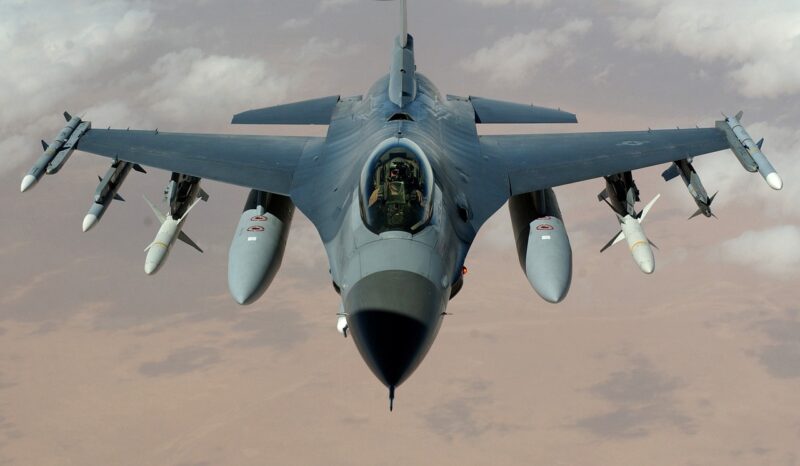Uncovering the Secrets of the Most Advanced Fighter Jet Ever Built
November 11, 2024

In the world of military aviation, fighter jets have always captivated the imagination with their speed, agility, and technological sophistication. Among the many aircraft that have graced the skies, one stands out as a pinnacle of engineering achievement: the Lockheed Martin F-22 Raptor. Designed to maintain air superiority, the F-22 represents the most advanced fighter jet ever built, integrating cutting-edge technology, stealth capabilities, and multirole versatility.
1. The Genesis of the F-22 Raptor
The F-22 Raptor did not emerge overnight. Its genesis dates back to the Cold War when the United States recognized the need for an air dominance fighter that could counter potential threats from Soviet-era aircraft. In 1981, the U.S. Air Force initiated the Advanced Tactical Fighter (ATF) program, aiming to develop a new generation of air superiority fighters. Lockheed Martin, along with Boeing and General Dynamics, was awarded the contract to build and test prototypes.
The Raptor made its first flight in 1997 and was officially inducted into service in 2005, after years of rigorous testing and evaluation. Designed to operate in both air-to-air and air-to-ground missions, the F-22 is a testament to the ingenuity of modern aerospace engineering.
2. Stealth: The Raptor’s Key Advantage
One of the most remarkable features of the F-22 Raptor is its stealth technology. This advanced aircraft was engineered to evade detection by enemy radar and sensors, ensuring that it can strike before being detected. Its unique shape, along with radar-absorbent materials, significantly reduces its radar cross-section. Unlike earlier stealth aircraft that relied on simple design cues, the F-22 employs a complex combination of techniques, including:
- Shape Optimization: The F-22’s design minimizes radar reflections and creates a low radar profile. This is achieved through the careful arrangement of curves and angles in its structure.
- Thermal Stealth: The aircraft’s engine exhaust is designed to dissipate heat, which is a significant thermal signature detectable by infrared sensors. This feature helps the Raptor remain hidden in the thermal spectrum as well.
- Signature Reduction Components: The Raptor includes features such as internal weapon bays and specially designed engine inlets that further reduce its infrared and radar signatures.
The culmination of these innovations allows the F-22 to conduct operations in contested environments where other aircraft would be at a severe disadvantage.
3. Superior Flight Performance
The performance of the F-22 Raptor is nothing short of extraordinary. It boasts a thrust-to-weight ratio that allows for exceptional acceleration and maneuverability. The aircraft’s twin Pratt & Whitney F119-PW-100 engines provide unmatched power, enabling supercruise capability, meaning that the Raptor can fly at supersonic speeds without the use of afterburners. Consequently, this feature enhances its stealth while extending its operational range.
In terms of agility, the F-22’s digital fly-by-wire system allows for precise control and responsiveness, making it a formidable opponent in air-to-air combat. This advanced technology gives it an edge, allowing it to outmaneuver other aircraft in high-stakes dogfights.
4. Multirole Versatility: More Than Just Air Superiority
While initially designed for air superiority, the F-22 Raptor has proven itself capable of performing a variety of roles. Here are some practical applications of its multirole capabilities:
- Air-to-Ground Missions: The F-22 is equipped with precision-guided munitions, including Joint Direct Attack Munitions (JDAMs) and laser-guided bombs, making it effective for strike missions against ground targets.
- Intelligence, Surveillance, and Reconnaissance (ISR): The aircraft’s advanced sensors and communication systems allow it to collect and relay vital intelligence, providing situational awareness to commanders in the field.
- Electronic Warfare (EW): The F-22 is equipped with advanced electronic warfare capabilities that can jam enemy radar and communications, further enhancing its effectiveness on the battlefield.
This versatility is essential in modern warfare, where engagement scenarios are often unpredictable and multifaceted.
5. State-of-the-Art Avionics and Sensor Fusion
At the heart of the F-22 Raptor’s capabilities is its sophisticated avionics suite. The aircraft integrates advanced sensors and radar systems to provide real-time battlefield awareness. The AN/APG-77 radar is a key component, utilizing Active Electronically Scanned Array (AESA) technology that allows for better target detection and tracking.
Moreover, sensor fusion technology combines information from various onboard sensors to provide pilots with a comprehensive and coherent operational picture. This capability streamlines decision-making and enhances situational awareness, allowing the pilot to focus on mission objectives rather than individual sensor outputs.
This level of integrated technology is unprecedented and exemplifies why the F-22 is considered one of the most advanced combat aircraft ever built.
6. The Raptor’s Legacy and Future
The Lockheed Martin F-22 Raptor has left an indelible mark on the field of aviation and military strategy. Despite its high cost, which has limited the number of units produced, the Raptor has forced adversaries to rethink their strategies due to its unmatched capabilities. Even after decades of service, it remains a critical asset for the U.S. Air Force and serves as a benchmark for future fighter jet developments.
Looking forward, advancements in technology may push the boundaries of air combat even further, focusing on unmanned aerial vehicles (UAVs) and next-gen fighters like the F-35. However, the lessons learned and capabilities established by the F-22 will undoubtedly shape air combat for years to come.
Conclusion
The F-22 Raptor signifies the epitome of aviation excellence, combining stealth, speed, agility, and versatility into one extraordinary package. As the air superiority fighter of the modern era, it showcases the pinnacle of what is achievable in military aircraft design. Uncovering the secrets of this marvel reveals not just a machine of war but a symbol of advanced engineering, ensuring air dominance for the United States and its allies for decades to come. Understanding the intricacies of the F-22 Raptor not only enhances our appreciation of military aviation but also the future of combat aircraft, making it a profound subject for enthusiasts and professionals alike.








